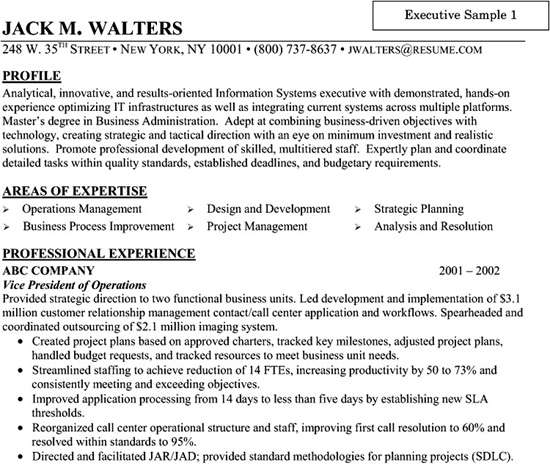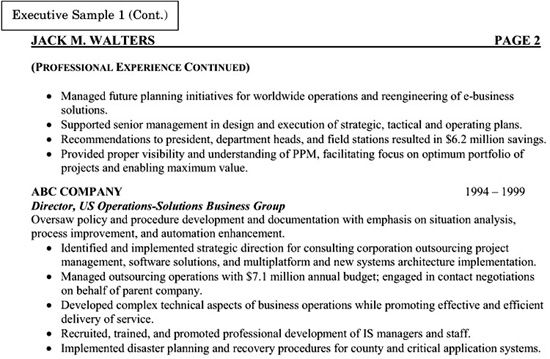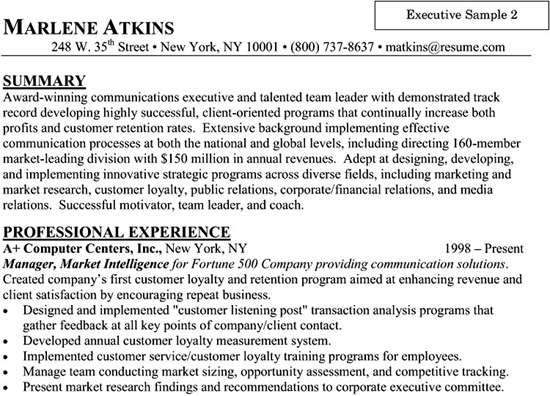The Resume.Com Guide to Writing Unbeatable Resumes (34 page)
Read The Resume.Com Guide to Writing Unbeatable Resumes Online
Authors: Warren Simons,Rose Curtis

In addition, you may list professional development or special training in this section if it superseded your educational career. Many professionals have an extensive amount of professional development, having attended numerous seminars or courses to augment their positions. If this is the case with you, create a “Professional Development” section in addition to an education section.
One note: Executives without diplomas should not be discouraged. If you’ve achieved a remarkable amount of success without a college degree, that speaks very highly of your abilities. Remember, Bill Gates dropped out of college.
EDUCATION
W
ESTERN
M
ICHIGAN
U
NIVERSITY
, K
ALAMAZOO
, MI
Master’s Degree in Business Administration 2000
Bachelor of Arts Degree in Economics
E
DUCATION AND
P
ROFESSIONAL
D
EVELOPMENT
T
ULANE
U
NIVERSITY
, N
EW
O
RLEANS
, L
A
B.S. IN FINANCE, 1990
Most executive resumes do not include computer skills or keywords sections, but you may include both if they support your professional objective. For more information on constructing these sections, review Chapter 6 for step-by-step instructions on how to choose and format this information.
Many executive professionals rely on executive recruiters and headhunters to help them identify opportunities and facilitate the interview process. But as with any career services provider, make sure that the headhunter or recruiter you are considering using has a proven track record of success placing professionals similar to you.







The Career Change Resume
A career change resume is a highly functional and flexible document that facilitates an applicant’s ability to move from one industry to another. Whereas a chronological resume emphasizes accomplishments at specific companies, a career change resume follows the functional format (see Chapter 3) and is a skill-oriented document that highlights your transferable abilities so that you can adjust easily to a new position in a new industry by using skills you already possess.
The career change resume is ideal if you
□
Are switching professions and would like to enter a new line of work
□
Are reentering the workforce and are pursuing a new field
□
Are a recent graduate applying for a position unrelated to your major
There are three areas of the career change resume that are vital for success: the headline, the Summary of Qualifications, and the professional skill sets sections. The headline introduces you and your expertise as well as the position for which you are applying. The summary should demonstrate your success and give an overview of your transferable skills, whereas the skill sets
section will delve further into those transferable skills to emphasize how these traits will transfer to a new field. By using the combination of targeted headline, summary of qualifications, and skill sets, you can highlight your case when transferring from one function to another.
Additional components of the career change resume are similar to those of the functional resume, including the work history, computer skills, education, keywords, and any additional miscellaneous sections (awards, affiliations, foreign languages). We will discuss each of these sections in greater detail as we walk you step-by-step through the creation of an effective career change resume. To identify and organize the information you’ll need to create your resume, use the worksheets in Appendix B.
Start the resume with an eye-catching header containing your name, complete address, telephone numbers, and e-mail address. Write your name on one line and include the rest of your contact information below it, using a border to differentiate the information. You may include your fax, pager, or cell phone number, but this is optional. Here is an example:

For additional pointers on creating attractive headers, review Chapter 6. After you have created the header, you are ready to start constructing the resume, beginning with one of the most essential parts of the career change resume: the headline.
The headline is a fundamental part of the career change resume. In one to two sentences it introduces who you are and what skills and talents you can bring to the table. Most hirers spend only 10 seconds reading a resume, and this section can help you stand out from the competition and compel prospective employers to call you for interviews.
The headline serves multiple purposes, including
■
Describing you in terms of job title or years of experience (most career changers will highlight an applicable skill)
■
Explaining the abilities you are able to contribute
■
Emphasizing the career or industry you are pursuing
The key to changing careers is showcasing the transferable skills and outstanding experiences that will convince a hirer that you are the right candidate for the position. Construct an effective headline by beginning with an introduction and description of who you are:
•
A talented professional
Then, working from your introduction, introduce two or three skills from your previous work history that can be applied to a new career you would love to have.
We recommend not placing your last job title in the headline and instead using the word “professional” to allow for maximum flexibility in applying for new careers and industries.
